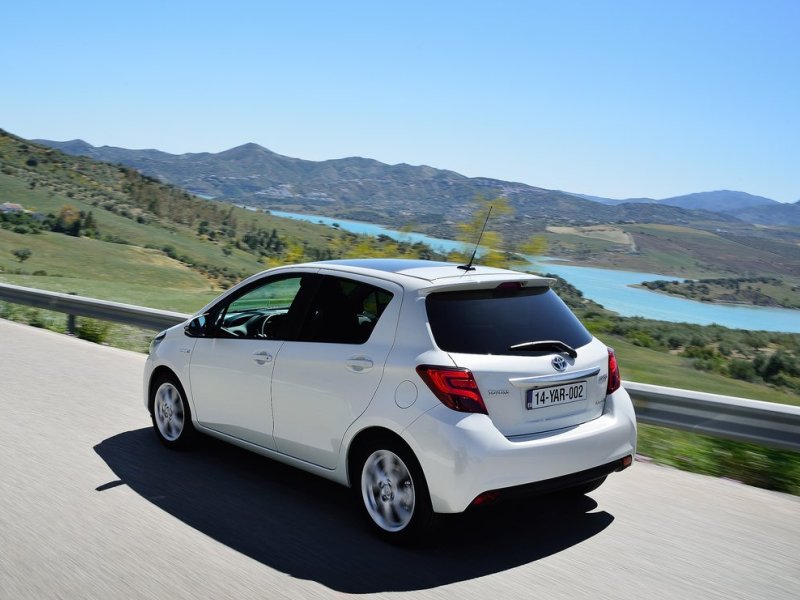Recent Articles
Popular Makes
Body Types
2015 Toyota Yaris First Drive Review
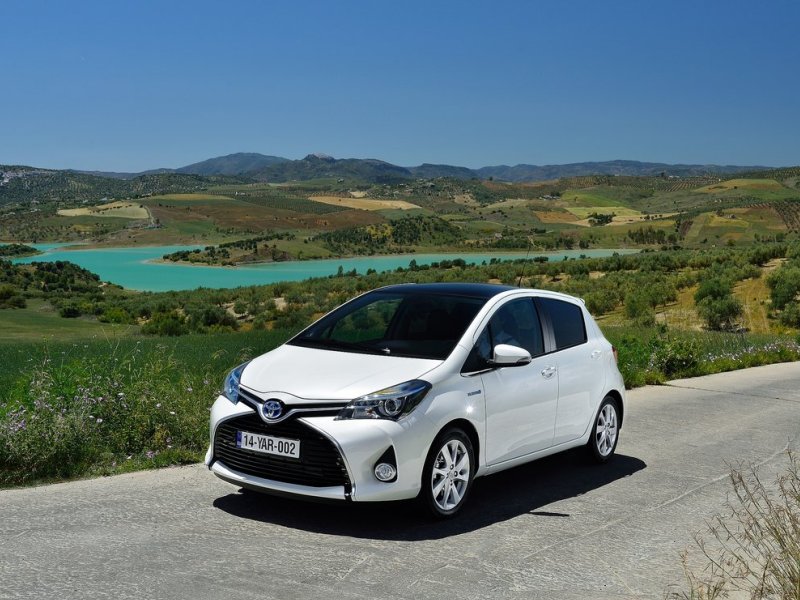
2015 toyota yaris white
During our conversations with the company’s spokespeople about the nature of the car for this 2015 Toyota Yaris first drive review, they mentioned the styling redesign of the model was intended to evoke the dynamics of a hot hatchback. Actually, more precisely said, with this redesign, they were trying to give the car something of a hot hatchback look..
Now granted they said the hot hatchback look, but in our opinion, if you’re out on the street in a policeman’s uniform, you ought to be ready help people if they run into trouble. Obviously, the goal was to attract more attention to the model by imbuing it with a more dynamic look, and that’s fine. Still, a certain segment of the populace is going to be looking for some go to accompany the show. And frankly, that’s some pretty aggressively held territory. You’re talking Volkswagen GTI, Mini Cooper S, Ford Fiesta ST, and the like.
Now given there wasn’t a whole lot of emphasis on the car’s powertrain during the model presentation we sat through, we approached the car inclined to believe its optics and comfort features were the key concerns of the Yaris product team.
Did this prove to be the case?
Well, read on…
Models And Pricing
For the 2015 model year, Toyota’s Yaris will be offered in three trim levels; L, LE, and SE. Toyota’s 2015 Yaris marketing plan eliminates broad option packages, and focuses instead on individual trim levels to make the car easier to purchase—while keeping the price somewhat in check.
With that said, the three-door Yaris L starts at $14,845, plus an $825 destination charge for a total of $15,670 with a five-speed manual transmission. With the four-speed automatic transmission, the price comes in at $16,395 including destination. The five-door L starts at $15,945 (with destination charges) and comes only with the automatic transmission.
The LE trim package is also offered in both three-door and five-door bodies, but only with the automatic transmission. Pricing starts at $17,330, and $17,705 respectively (again including destination charges).
Yaris SE is a five-door proposition only. This version of the Toyota hatchback can be had with either the manual transmission or the automatic transmission. (For our first drive review we sampled the SE with the five-speed manual.) For 2015, the Toyota Yaris SE’s pricing starts at $19,327 with the manual and $18,445 with the automatic (again, including destination charges).
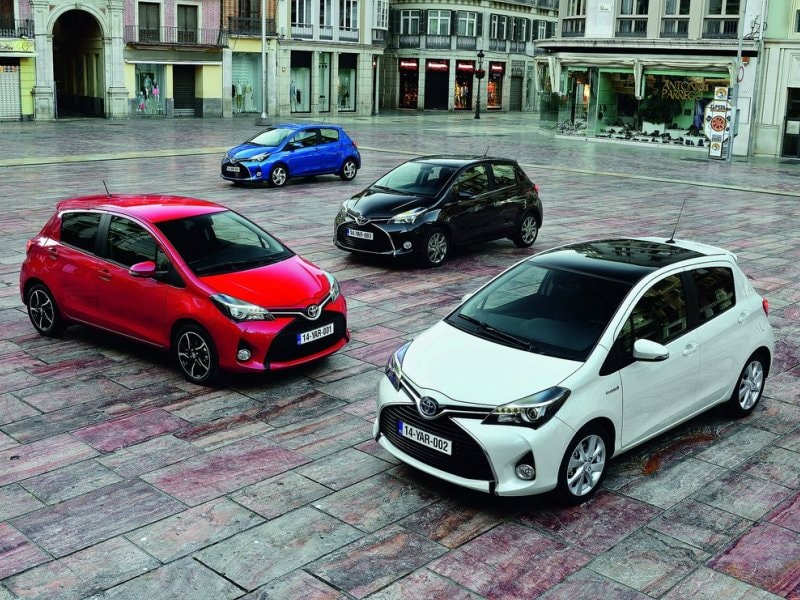
Design
By and large, the exterior design and the interior treatment are the areas with the most significant changes for the 2015 model year. Toyota tapped its European design team for the look of the revised car. They prescribed new LED daytime running lights, projector beam headlamp assemblies (both for the SE), and a larger, more dynamic grille.
Out back, the primary changes include the bumper, rear hatch design, redesigned tail lamp assemblies, and strangely, the deletion of the chrome exhaust tip—on a model being billed as offering a more sporting flavor. Of course, you can always pick that up from the dealer we suppose.
The larger grille opening is in keeping with Toyota’s current “big mouth” styling treatment, and serves as a nice counterpoint to the almost delicate-looking headlight arrays. These are tied together nicely with the sweeping spear spanning the width of the car and cradling the Toyota logo—which serves as the “nose” of the car’s “face”. A set of foglights resides in the lower corners of the front end (of the SE), lending an air of substance and seriousness to the overall appearance of the sportiest version of the Yaris.
All in all, it’s a handsome redesign; and the Yaris absolutely looks more aggressive thanks to the changes.
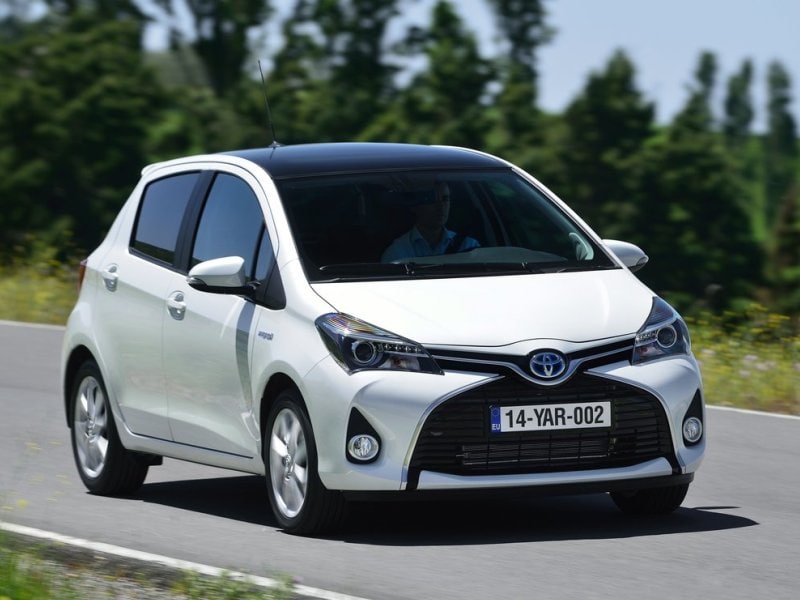
Features And Controls
Standard features on Yaris L for the 2015 model year include a set of 15-inch steel wheels, power door locks, illuminated entry, power windows, air conditioning, Bluetooth telephony and audio streaming, a split folding rear seat, and HD radio with a 6.1-inch touchscreen, supporting Toyota’s Entune Smartphone applications integration. There’s also a CD player, an auxiliary audio input port, and a USB interface. The audio system incorporates iTunes tagging as well.
It should be noted many of these features cost extra in competing models.
Moving up to the LE trim package adds power exterior rear view mirrors, keyless entry, cruise control, audio controls on the steering wheel, and a set of 15-inch alloy wheels to replace the steel wheels fitted to Yaris L.
Yaris SE gets 16-inch alloy wheels, a more aggressive styling package, a rear spoiler (which can be added to both L and LE models), and stickier tires. There’s a full set of disc brakes (the other models use drums in the rear), and a leather-wrapped steering wheel. Interestingly, we were told all Yaris models now feature the same suspension tuning as the SE. (Of course, this could also be interpreted to mean there is nothing special about the suspension tuning of Yaris SE other than the larger wheels and stickier tires.)
Navigation, an ashtray cup, a cargo net, and a first aid kit are available as options. Other options include body side moldings to prevent door dings, door edge guards, paint protection film, a rear bumper “Yaris” decal, and the rear spoiler we referred to above.
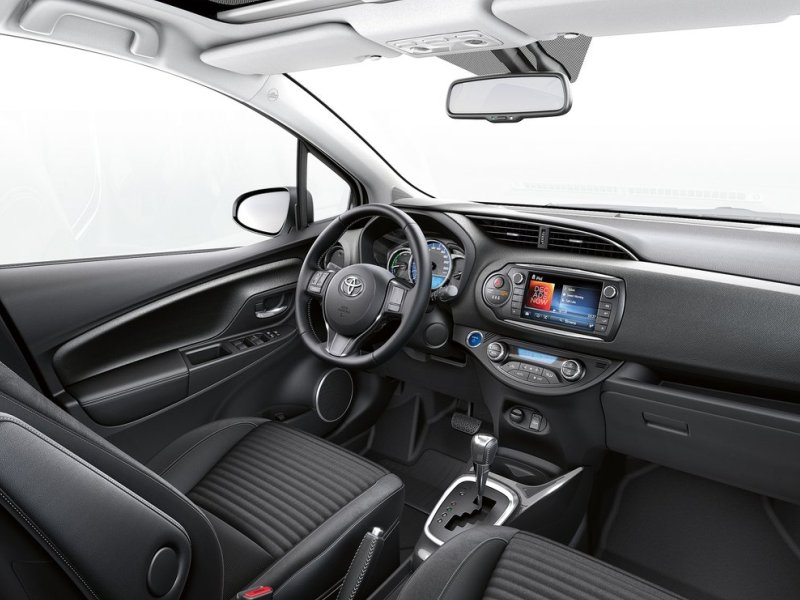
Comfort And Cargo
The interior redesign is both simple and handsome. A nicely restrained use of metallic accents and soft touch materials mitigates the abundance of plastic, making the model look less “affordable”. The storage tray running along the lower edge of the dash, just above the glovebox, is a nice touch. It keeps things often used handy (though not out of sight of predators).
Three primary gauges in the instrument binnacle dominate the view from the driver’s position, and the large entertainment system to the right of the steering wheel looks right at home. The contrasting colored dash pad adds an interesting visual effect, while looking thoroughly contemporary. We also love the three large round dials provided for interacting with the climate control system. Just below the climate system are ports for auxiliary DC power and the USB input.
The driver’s seat adjusts six ways now—thanks to the addition of height adjustability. The steering wheel offers tilt adjustments, but not telescoping capability. The interior of the car accommodates two adults rather comfortably up front. Headroom is generous and shoulder room is decent, you don’t feel as if you’re sitting too close together. Legroom, as you might expect in the back seat is dependent upon the front seat passengers, but four people could be transported in the Yaris SE we drove with reasonable comfort.
Both the three-door and the five-door bodies offer just over 15 cubic feet of cargo capacity with the rear seat in place.
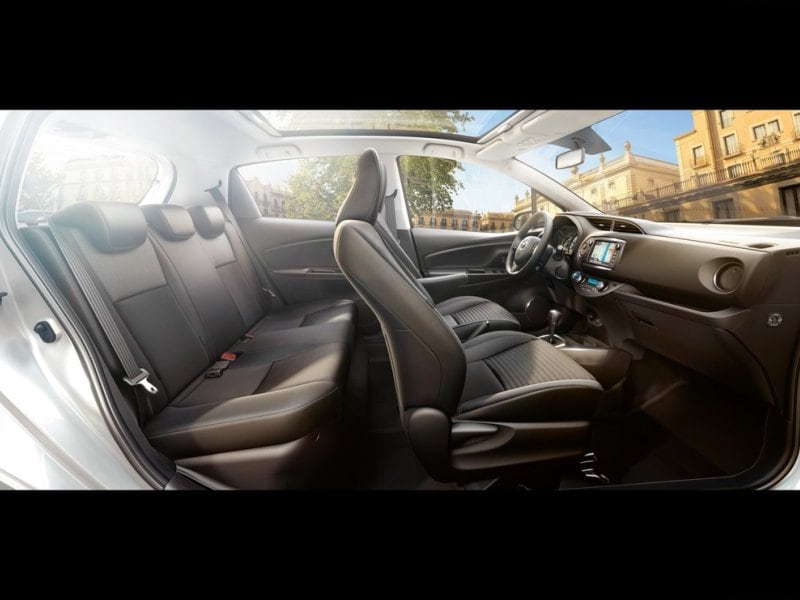
Safety And Ratings
When NHTSA slammed Toyota’s Yaris into various and sundry stationary barriers, the results came back four stars in overall crash protection, five stars in side impact protection, and frontal impact protection garnering four.
When the Insurance Institute of Highway Safety torture tested the 2015 Yaris, the little car earned mad respect in the majority of the tests. The organization awarded its highest rating (Good) in its moderate-overlap frontal-offset, side-impact, roof-strength, and head restraint (whiplash protection) tests. On the other hand, the new small overlap frontal offset test, proved difficult for the Yaris. The model only managed a “Marginal” score in that one. In all fairness though, it’s a test many cars in the class struggle with.
Standard safety kit for the 2015 Toyota Yaris includes antilock brakes. It should be noted however; rear drums are fitted to all Yarii except the SE. This sportier version of the hatchback gets four-wheel discs. Traction and stability control are also standard fare, along with active front head restraints, front-seat side airbags, front and rear side curtain airbags, front-seat cushion airbags, and a driver’s knee airbag.
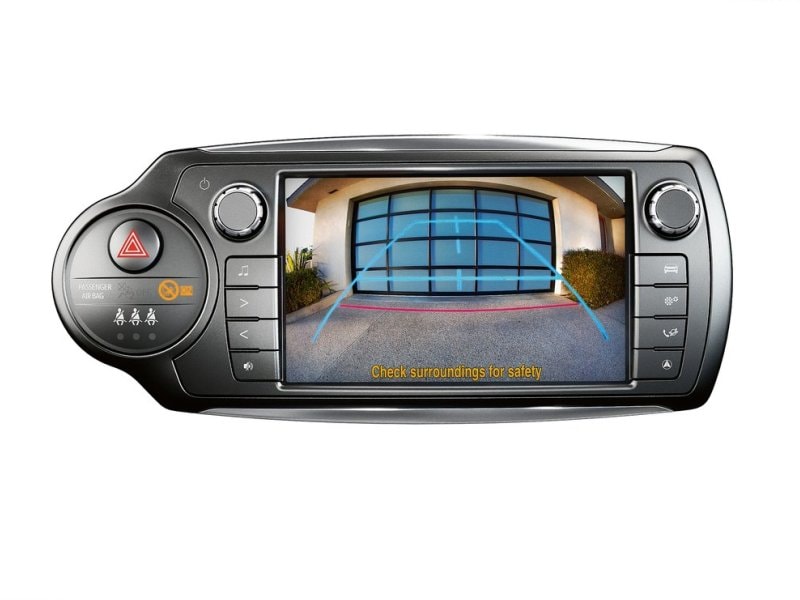
Engine & Fuel Economy
Power for the front drive compact hatchback comes from the same 1.5-liter normally aspirated inline four-cylinder engine fitted to the previous version of the car. Both the five-speed manual and four-speed automatic transmissions carry over as well.
The engine generates 106 horsepower at 6,000 rpm and 103 ft-lbs of torque at 4,200 rpm. While those numbers sound low in an era of 300-horsepower practically everything, it’s important to remember the Yaris only weighs 2300 pounds, so power and torque are somewhat adequate, if not exactly scintillating.
Fuel economy for the 2015 Toyota Yaris is rated at 30 miles per gallon in the city, 37 on the highway, and 33 combined—when fitted with the manual transmission. With the automatic transmission, the updated Yaris returns 30 in the city, 36 on the highway, and 32 combined.
It should be noted the hydraulic clutch was reworked a bit to smooth operation of the manual transmission.
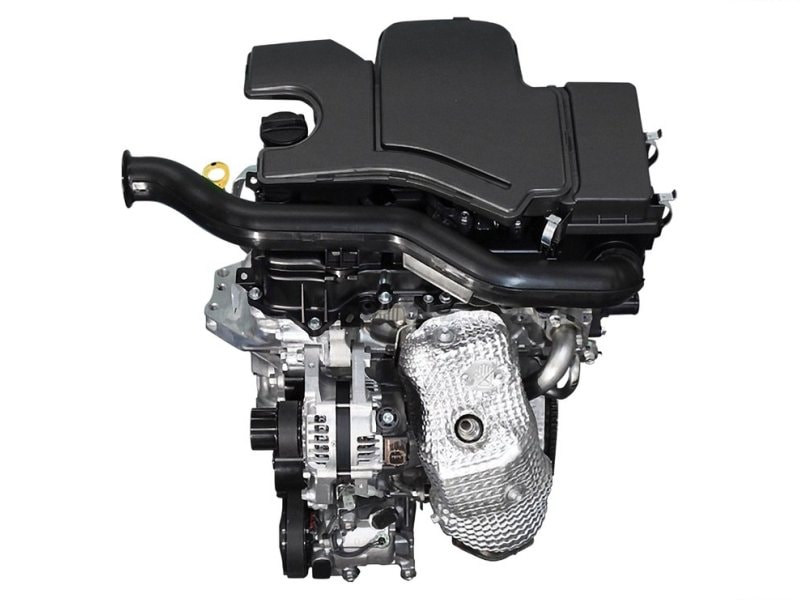
Driving Impressions
Yaris, like practically every other Toyota model offers simple—problem-free operation and a very easy driving experience. Outward visibility is good all around, controls fall readily to hand, everything is where instinct tells you it should be, and the new larger dials make operating secondary functions very convenient.
While the steering wheel is only adjustable for tilt, the height adjustable driver’s seat does offer an added degree of tailoring. This helps the Yaris fit a broader array of drivers. In our five-speed manual transmission equipped SE test model, clutch engagement was nice and progressive. Further, throttle response was sufficiently cooperative to make setting the Yaris into motion — even with its relatively low maximum torque figure occurring pretty high in the rev range at 4200 rpm — readily accomplished.
Overall acceleration was adequate, if not brisk. In our wholly unscientific 0 to 60 testing we consistently got our Yaris SE to sixty in right around 10 seconds with a pair of 190-pound males on board. Ride quality was smooth, braking was confident, steering response was good—if a bit lacking in feel, and the Yaris cornered with reasonable competence.
All in all, the Yaris offers a great deal of reassurance. The engine feels like it will run trouble-free forever, just like people expect a Toyota product to perform.
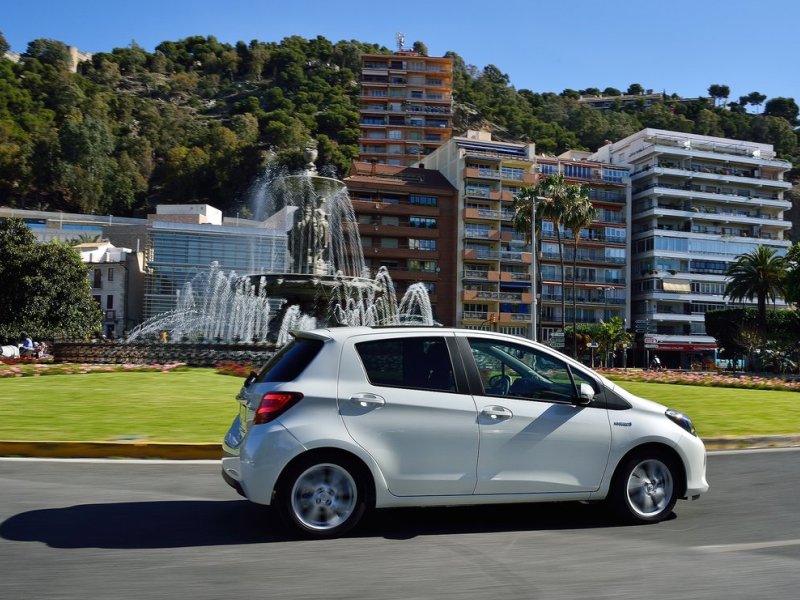
Final Thoughts
Now, with all of that said, Mini’s Cooper S, Volkswagen’s GTI and Ford’s Fiesta ST models have absolutely no reason to be concerned about Toyota’s Yaris. Nissan’s Versa, Honda’s Fit, and the standard Ford Fiesta may find themselves cross-shopped against this new Toyota quite a bit however. Similarly Kia’s Rio and Hyundai’s Accent will be considered in the same breath.
However, all of those models offer newer powertrains, more modern transmissions, and in many cases more cargo space, a more dynamic driving experience, and even better ride quality. This is a very competitive category, so everybody has been coming with some pretty strong propositions in the compact hatchback segment of late.
Of course this is exactly why Toyota went out and extensively reworked the Yaris’ appearance, so at least it wouldn’t look older than the competition. Thing is, while its mechanicals are the most archaic (and among the least powerful) of the bunch, they are also proven to be the most reliable in the class.
In our conversations with the Toyota engineering representative, whenever we brought up the fact the powertrains were kind of on the old side, he kept coming back to their reliability, and the fact the average person buying a Yaris doesn’t really care about world-class this, or the most advanced that. All they really care about is how comfortable the car is, how nicely equipped it is, decent fuel economy, and that it starts every time they get ready to drive it somewhere.
On these scores, the 2015 Toyota Yaris has the makings of a home run.
And, for performance junkies, there’s always Toyota’s TRD group.
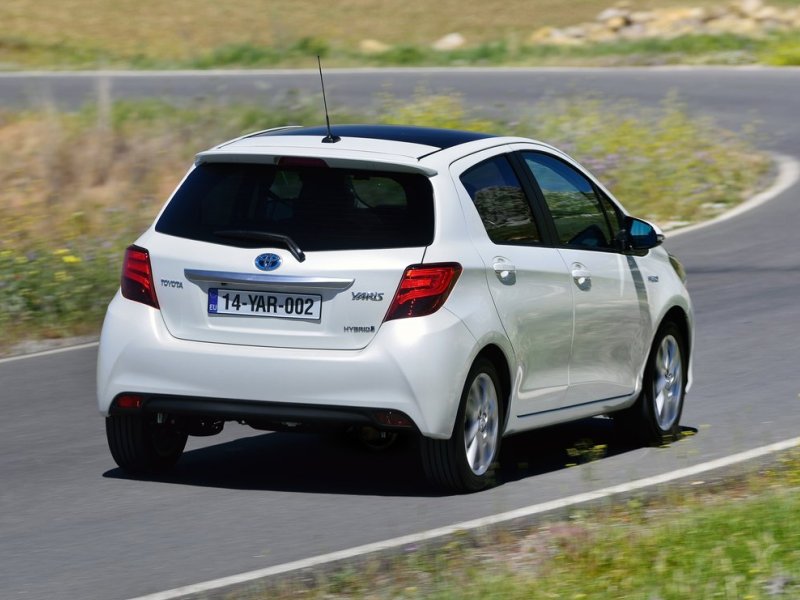
Pros And Cons
Pros:
Lovely interior treatment
Strong value for the money in terms of standard equipment
Roomy interior for the class
Cons:
If you’re looking for a dynamic driving experience—this isn’t the one.
Cargo capacity lags several competitors
Five-speed manual and four-speed automatic transmissions—in 2015?
